
In the struggle for beauty, various means are used, such as partial photothermal decomposition. This technology is very popular. It allows you to get rid of many cosmetic problems in a short period of time and almost painlessly. Before agreeing to the procedure, you need to familiarize yourself with the contraindications.
Fractional photothermolysis - what is it?
This process uses a laser. It causes localized destruction of cells in the process of heating the skin. During exposure, the skin suffers thermal burns. Such lesions can vary from 0. 1 to 0. 4 mm in diameter and 0. 5 mm in depth. Burns are punctate. This damage to the epidermis stimulates tissue regeneration and collagen synthesis.
Fraxel laser resurfacing does not destroy melanocytes. For this reason, dark people do not develop hypopigmented spots after photothermolysis. In contrast, lasers promote the redistribution of melanin to even out skin tone. Partial facial rejuvenation has the following benefits:
- Can be used on young (after 16 years) and aging skin;
- Wide range (eyelids, face, shoulders, etc. );
- lasting effect;
- Can be held at any time of the year, including summer;
- Can be applied to any type of skin.
ablative fractional photothermolysis
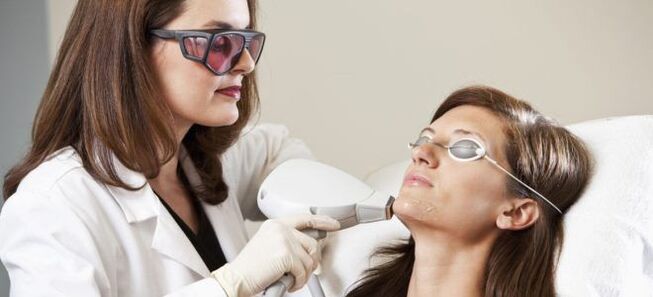
In this procedure, erbium and CO2 lasers are used. When exposed to the skin, the fluid in the epidermal cells is heated to 300°C. As a result, these areas evaporate and small open wounds form in their place, surrounded by thermally coagulated cells. The process of restoring these "zones" takes a lot of time. This fractional laser resurfacing is performed in courses, each lasting from 2 to 6 sessions. It provides amazing lifting effect. However, when it does, the risk of infection of the dermal tissue is high.
Non-ablative partial photothermolysis
This procedure is considered gentler than ablation procedures. This laser skin resurfacing with fractional CO2 laser does not destroy the integrity of the epidermis: there are no open wounds. This procedure is less effective than ablation, in part because the decay products are not removed to the outside, but remain in the thickness of the skin. Laser fractional photothermolysis is recommended in the course, which can vary in duration from 4 to 10 procedures. When they are performed, the risk of skin infections is reduced to zero.
Fractional Photothermolysis - Indications
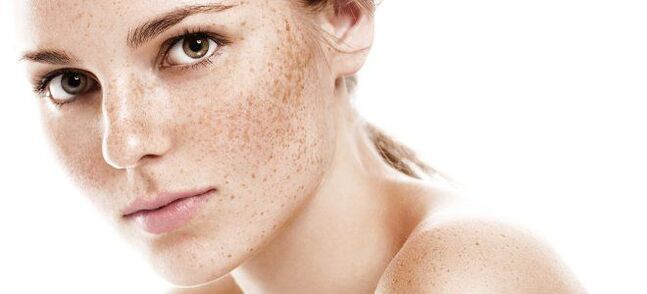
This cosmetic procedure has a wide range of applications. Fractional photothermal therapy can treat scars, but that's not its only purpose. This process helps resolve the following issues:
- increase skin tone and elasticity;
- fights hyperpigmentation;
- Eliminate solar keratosis;
- remove wrinkles;
- reduce pores;
- Helps get rid of stretch marks on the body;
- After acne removal.
Fractional photothermolysis - contraindications
Not everyone can enjoy the results of this procedure. Skin photothermolysis has the following contraindications:
- tumor disease;
- Chronic diseases in the acute phase;
- skin disease;
- Inflammatory processes in the body;
- mental illness;
- hormone imbalance;
- Pregnant;
- lactation;
- heart failure;
- blood disease;
- diabetes;
- contagious disease.
Additionally, partial photothermal therapy is prohibited if mechanical dermabrasion has been performed recently (less than two weeks ago). Such procedures are also not possible after solarium and sunbathing. High temperature and fever are contraindications to photothermal decomposition. It cannot be done even if the skin integrity of the treated area is violated.
Absolute contraindications to partial photothermolysis are the following drugs:
- vitamin A;
- cytostatic;
- Glucocorticoids;
- Immunosuppressants.
Shuttle program
Partial skin rejuvenation should be performed by an experienced beautician with medical education. At the appointment, the specialist will objectively assess the skin condition and make sure there are no contraindications to the procedure. In addition, before the Fraxel laser treatment of the facial skin, the beautician warns the patient of possible complications after photothermal therapy. Also, an expert is sure to tell you how to properly care for your face or body during recovery.
Fractional Photothermolysis - Preparation
It starts 2 weeks before the proposed manipulation. It can be divided into the following steps:
- Refuse to use cosmetics that are harmful to the skin. These include scrubs and peels. In addition, the use of salicylic and glycolic acids and retinol must be excluded. These restrictions take effect half a month before the partial photothermal decomposition.
- Visits to solariums and beaches are prohibited one week before surgery.
- 2-3 days before the procedure, you will need to start taking antibiotics and antiviral medications prescribed by your beautician. Such drugs will minimize the risk of inflammation or infection of the epidermis.
- You will need to stop exercising and other strenuous physical activity the day before fractional laser resurfacing. Alcoholic beverages are also prohibited at night.
Fractional Laser Skin Resurfacing
The process lasts about an hour. Its implementation takes place in several stages. Partial photothermal decomposition of the face proceeds as follows:
- The beautician cleans the patient's skin with a light exfoliation.
- The specialist applies anesthesia to the surface to be treated.
- After 40 minutes, the beautician begins to treat the face with a special nozzle. At this point, the patient may experience a slight tingling sensation. During the procedure, the skin is cooled by airflow, which reduces discomfort. The most problematic areas of the face require multiple treatments.
- Apply the soothing cream to the skin.
Photothermal decomposition of eyelid part

Since the skin around the eyes is very delicate and sensitive, it is affected by the lowest power laser. The most commonly used device is the erbium rod. Its maximum allowable wavelength is 1420 nm. Before starting the partial photothermolysis of the eyes, the beautician puts on special protective lenses for the patient. The procedure itself is performed in exactly the same way as when treating the skin of the face or body.
Fractional Photothermolysis - Side Effects
This process is considered gentle. The risk of side effects is minimal if the patient has previously taken antibiotics and anti-inflammatory drugs prescribed by a specialist and followed all recommendations. In addition, the skill of the beautician depends on whether the rejuvenation will be accompanied by complications. The more experienced he is, the more professional the procedures performed, so the risk of negative consequences is low.
Fractional laser photothermolysis is more often associated with the following complications:
- swelling and redness in the treated area (ice to help remove);
- peeling (eliminated with moisturizers);
- Bronzing effect (keeps for 1-2 weeks).
If a skin infection occurs during partial photothermolysis with an erbium laser, the following side effects may occur:
- Streptomyces;
- erythema;
- air bubbles (such as after burns);
- hyperpigmentation;
- rash.
Fraxel - Rehabilitation
After surgery, the skin needs special care. The duration and final results of the recovery period depend on compliance with the beautician's advice during this period. When using Fraxel, you must follow the following skin care instructions after surgery:
- Continue taking antibiotics and antiviral medicines at the doses prescribed by your specialist for a period of time.
- If the procedure is performed by a male, it should only be shaved on the third day and should be done very carefully.
- For 48-72 hours after the manipulation, do not exercise or subject your body to severe physical exertion.
- It is necessary to give up drinking (this is a 2-3 day limit).
- Visits to solariums and beaches are not allowed during the month. Before going out, be sure to apply a high SPF cream on the treated area of the skin.
- You can't rip off the shell that's already on the skin! She had to fall off herself.
- In the first few weeks after surgery, in order to care for the treated area of skin, it is necessary to use topical preparations prescribed for thermal burns. A moisturizing spray is also suitable for use during this period.
- Within a month, chemical peels and scrubs should be given up.
Fractional Photothermolysis - Effects
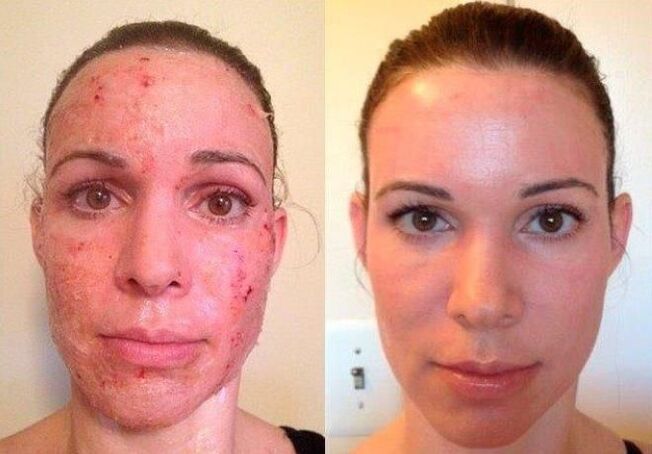
On the first day, the skin looked as if it had been exposed to the sun. Partial photothermolysis photos taken immediately after surgery were not impressive. Recovery with a non-ablative type of procedure takes approximately 3-4 days. After the ablation procedure, this period lasts about a week. While even a single session can improve skin condition, it shouldn't stop there. You need to go through the whole process: the fractional photothermal effect before and after the photo makes you believe it.
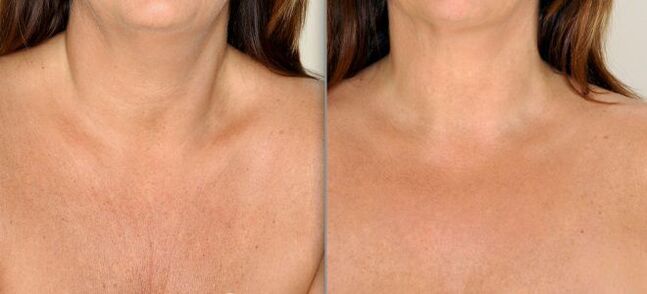
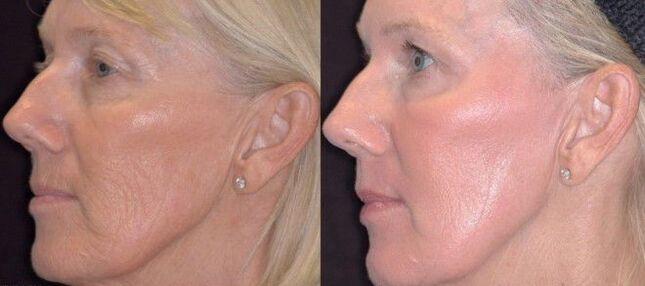
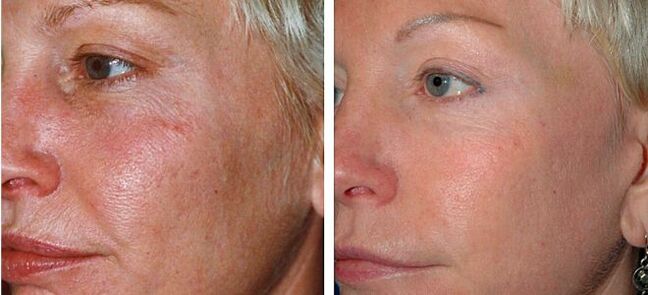
In each case, the duration of this treatment is determined by the beautician. The interval between individual operations is 4-5 weeks. The duration of treatment depends on the problem being addressed:
- For rejuvenation, it is recommended to perform 3-4 times;
- Partial photothermolysis of scars is represented by 6-8 procedures;
- To deal with problem areas of the skin, 5-6 pyrolysis sessions are prescribed.
























